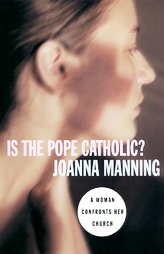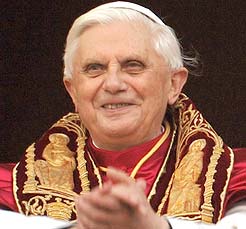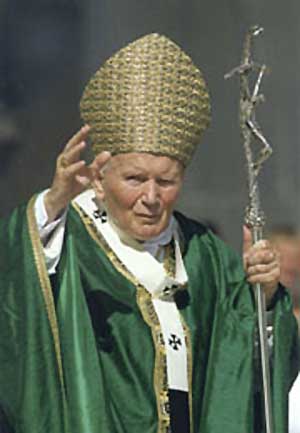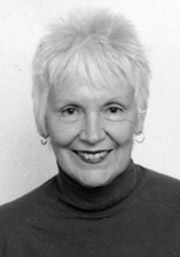 |
||||
|
The devil and the deep Holy See
What gives the Vatican the right to speak as a state opposed to equality for women, asks former nun Joanna Manning By Joanna Manning - June 5th, 2000. Vatican City, or the Holy See as it is designated at the United Nations, is the official residence of the Pope and headquarters of the Roman Catholic Church. But the tiny territory of just over 100 acres and 766 souls also functions as an independent state, and it is this unique status that has given the Catholic hierarchy a platform from which it will try to derail efforts by the international community to end discrimination against women. Those efforts will become abundantly clear at a major women's conference opening today in New York. Ever since the 1994 UN Conference on Population and Development in Cairo, which Pope John Paul II referred to as "the work of the devil," the Holy See has mounted an intense diplomatic campaign to erode the gains made by the international women's movement. The government of the Holy See, in effect, a part of the Catholic Church, is open to men only and it has made common cause at the United Nations with states, such as Saudi Arabia and Iran, which still constitutionally discriminate against women. The government of the Holy See is not elected nor is it held accountable for its actions. Acting under the absolute power of the Pope, it holds that internationally recognized rights to freedom of expression do not apply within its boundaries. It has forged alliances at the UN with other states such as Libya and Guatemala, where the exercise of democratic rights are similarly compromised.
At the 1995 Beijing Women's Conference, the Vatican delegation held up proceedings for days over the use of the word "gender." The Holy See adheres to a belief that God created men and women as "equal but separate," so that contemporary cultural or social gender analysis is an affront to God's eternal design and leads to dissent over the Pope's infallibly decreed ban on women's ordination. In the year 2000, this line of thinking might seem merely quaint were it not for the cloak of respectability afforded to these and other reactionary positions by the Vatican's access to the floor of the United Nations. Although it has refused to sign the UN Convention to Eliminate Discrimination Against Women because it reserves the right to discriminate against Catholic women, the Vatican has used various UN bodies to try impose its opinions on female sexuality and health on all the women of the world. It was the Vatican that led opposition to providing contraception and abortion for women in conflict zones such as Bosnia and Kosovo, where rape was a weapon of war. The Vatican's childless celibates also orchestrated a campaign to cut off funding to UNICEF for the world's most needy children because the agency distributes emergency contraception to teenage girls in war zones. At a meeting in March to prepare for this week's conference following up on the Beijing session, the tactics of the Holy See and its fundamentalist allies changed from obstruction to intimidation. Priests in full clerical garb, waving rosaries as a weapon to ward off evil spirits, invaded women's caucuses. Some conducted an exorcism in the room where the lesbian caucus had met. Given this latest rash of outrageous behaviour, a movement known as See Change is building among several non-governmental organizations determined to expose the status of the Holy See to public scrutiny. Does the Holy See speak for all 900 million of the world's Catholics at the UN table, or only the few hundred inhabitants of Vatican City? If the Holy See is, indeed, a church rather than a state, then is it appropriate for the Catholic Church alone of all the world's religious organizations to have special status at the United Nations?
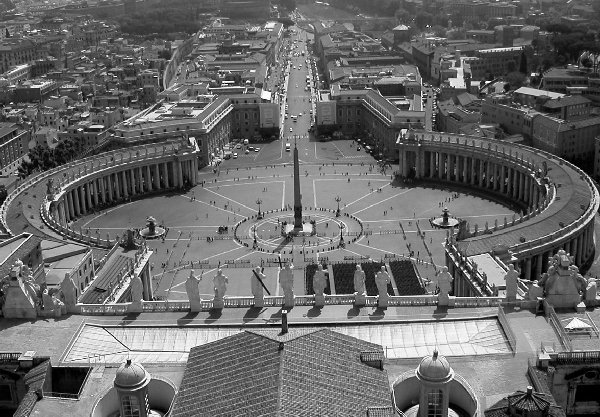 This special status of the Catholic Church goes back to the fourth Century, when Constantine adopted Christianity as the state religion of the Roman Empire. He opened the door on the historical process whereby the Vatican hill where Peter the apostle was martyred eventually became the seat of government of the religious state constructed by his successors. As the political stability of Europe ebbed and flowed between various waves of invaders, the Church took over the role of the state in Rome. In 769, Pope Stephen III traveled north to anoint Pepin and his son Charlemagne as heirs to the western Roman Empire. In the Pope's hand was a document known as the Donation of Constantine, purporting to be the legacy of the emperor to the Church, placing sovereignty over Italy and "the regions of the west" in the hands of the Bishop of Rome. Exposed as a forgery in the 15th century, the Donation nonetheless fueled the ambitions of medieval popes to rule over earthly as well as heavenly kingdoms.
Some popes, such as Julius II, rode out in person to do battle for their boundaries. In 1870, on the eve of the occupation of the papal states by Italian troops, Pius IX -- recently nominated as a candidate for sainthood -- asserted that papal temporal power is an article of faith for Catholics. But Rome fell to the Italians and the pope became a prisoner in the Vatican. Fifty- nine years later, Mussolini restored a much reduced papal state. The Lateran Treaty of 1929 gave the pope the smallest independent state on Earth, together with a postal service. The Vatican joined the universal postal union and, through this, became a permanent observer of the United Nations, the same status enjoyed by Switzerland. It is from this position that it continues to admonish the rest of the world on how to treat women.
In a carefully orchestrated move designed to mute the See Change campaign, the Holy See recently named UN Secretary General Kofi Annan the recipient of its Path to Peace award to be conferred at the end of this week's conference. This latest rendering unto Caesar may succeed in the short term, but the swelling chorus of voices in favour of removing the remnant of the Roman Empire from the Catholic Church will be hard to silence.
Joanna Manning, a former nun, is author of "Is the Pope Catholic?".
|
|
|||
|
|
||||
|
|
||||
 |
|
 |
||
